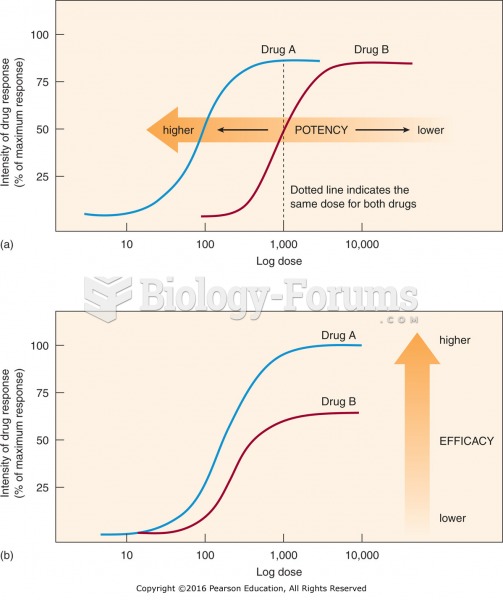|
|
|
Did you know?
Calcitonin is a naturally occurring hormone. In women who are at least 5 years beyond menopause, it slows bone loss and increases spinal bone density.
Did you know?
After 5 years of being diagnosed with rheumatoid arthritis, one every three patients will no longer be able to work.
Did you know?
In 1864, the first barbiturate (barbituric acid) was synthesized.
Did you know?
Cyanide works by making the human body unable to use oxygen.
Did you know?
Many supplement containers do not even contain what their labels say. There are many documented reports of products containing much less, or more, that what is listed on their labels. They may also contain undisclosed prescription drugs and even contaminants.
 In 1839 Mary Cragin, at the age of twenty-nine, became a convert to John Humphrey Noyes’s “communism
In 1839 Mary Cragin, at the age of twenty-nine, became a convert to John Humphrey Noyes’s “communism
 Potency and efficacy: (a) Drug A has a higher potency than drug B. (b) Drug A has a higher efficacy ...
Potency and efficacy: (a) Drug A has a higher potency than drug B. (b) Drug A has a higher efficacy ...





